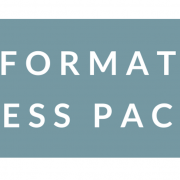Steps a Business Owner Should Take When a Key Employee Jumps Ship for a Competitor
Having key employees sign written Noncompete Agreements does little to protect an business owner unless the owner is prepared to take action to enforce the company’s rights. Employers should treat departing employees with noncompetes in a consistent way by (i) reminding them of their continuing obligations upon termination, (ii) promptly sending “cease and desist” letters upon learning that they are engaging in competitive activities, and (iii) being prepared to promptly pursue legal action when they do not comply with the employer’s demands. Being ready and willing to take appropriate action can preempt a significant threat to the employer’s business before harm occurs, and, perhaps as importantly, can send the message to the employer’s current and former employees and its competitors that the employer takes seriously threats of unfair competition.
A Friendly Reminder During the Exit Interview
Conducting exit interviews with departing employees serves two important goals. First, an exit interview presents an opportunity to remind departing employees of their continuing obligations to the employer. Employers should review the terms of the employee’s non-competition agreements with the employee during exit interviews so that departing employees understand their obligations (and understand that the employer takes these obligations seriously). Company managers are trained to properly conduct such interviews so that they do not unwittingly agree to limit the scope of the noncompete in their discussions with departing employees.
Second, an exit interview can be helpful in gathering information to assess the threat posed by a departing employee. Too often employees leave employment stating that they are “pursuing other opportunities” in a different industry but immediately begin working for competitors in capacities that arguably breach their noncompetes. A former employer often will not learn of a breach until weeks or months later, after much harm has occurred and the leverage to enforce the noncompete has been diminished.
A departing employee should be questioned about future plans so that the employer can learn if the employee intends to work for a competitor and what activities the departing employee will perform for the new employer, or whether the departing employee intends to start a venture that may be competitive with the former employer. If a departing employee denies going to work for a competitor and then does so, the employee’s misrepresentation may well be held against him or her in subsequent litigation.
Employers should also ask departing employees to verify that they are not keeping any company property or documents that contain confidential or proprietary business information. Particular attention should be paid to a departing employee’s laptop computer and work station. Employers should assess the need to preserve and/or immediately review emails and other information stored electronically for evidence showing that the departing employee has breached or intends to breach a noncompete. As a follow-up to exit interviews, employers should consider issuing a letter to the departing employee that outlines the employee’s continuing contractual obligations to the employer and the independent duties owed the employer under statutory and common laws that protect trade secrets.
Additionally, noncompete agreements sometimes include a provision by which the employee agrees that the employer may forward a copy of the noncompete to future employers. This step can be useful in alerting potential competitors about the existence of the agreement (so that they cannot later claim they were unaware of the employee’s continuing obligations), however, this should be done carefully so as not to risk a claim of unlawful interference with the former employee’s business relationship with his or her new employer or a defamation claim by the former employee.
Similarly, when an employee who had contact with customers departs for a competitor, an employer should take steps to protect the customer relationship, such as informing the customer that the former employee has departed and introducing the customer to its new contact at the employer. Keeping the lines of communication open with customers is important for another reason: customers are often the first to report that a former employee is soliciting the former employer’s customers in breach of the noncompete. Again, such communications must be handled with care to limit exposure to claims of defamation by the former employee.
Triage
Employers must quickly evaluate whether the employee’s new position with a competitor threatens the employer’s goodwill, trade secrets and/or confidential information. Employers cannot sit on their rights in these situations because delay may hinder the employer’s ability to obtain legal relief. Here are a few questions a business owner should answer as soon as possible before determining its response:
- Is the former employee’s new employer or new business venture competitive?
- What activities will the former employee be performing for the new employer?
- Will he or she be calling on the former employer’s customers for the new employer and/or disclosing trade secrets or confidential pricing information?
- Will the former employee’s activities likely breach one or more of the restrictive covenants contained in the agreement?
- How will the company be harmed? Will customers be lost? Will valuable trade secrets be exposed?
The “Cease And Desist” Letters: A First Shot Across the Bow
Once a business owner has determined (or has a good faith belief) that a former employee is breaching a noncompete, typically the next step will be to engage legal counsel to send a demand or “cease and desist” letter to the employee. The demand letter does not have to be lengthy or overly complicated, but it should contain an accurate summary of the contractual, statutory and common law restrictions that bind the former employee, a summary of the facts showing that the former employee is in breach of his or her noncompete (or otherwise in violation of applicable law), a description of the harm suffered or potential harm the employer may suffer as a result of the former employee’s breach of duties, and a demand for specific actions and written assurances.
In many noncompete situations, it is also appropriate at this stage to send a separate demand letter to the former employee’s new employer setting forth the facts and arguments as to why the new employer’s engagement of the former employee will unlawfully interfere with the noncompete between the former employee and old employer. Cease and desist letters must convey the message that the former employer takes the former employee’s continuing obligations seriously and will not allow its goodwill, trade secrets or confidential information to be unlawfully misappropriated. These letters are a critical tool because most noncompete situations are resolved by settlement following the exchange of the cease and desist letter and response.
Filing Suit
If the noncompete situation is not resolved by the sending of cease and desist letters or through some other negotiated solution, then the employer must assess whether it is worth the time, energy, and expense to file a lawsuit to enforce the noncompete. Unlike most lawsuits, where the goal simply is to win a judgment awarding money damages, the goal in most noncompete situations is to obtain an immediate order from the court called a preliminary injunction (or in certain emergency situations a temporary restraining order). A preliminary injunction will order the former employee (and new employer) to stop taking certain actions, such as working for a competitor altogether, calling on certain customers for the new employer, or using or disclosing confidential and proprietary information. If the former employee or new employer violates the preliminary injunction, they can be found to be in contempt of court. The idea is that the preliminary injunction will stop the conduct, preserve the status quo between the parties, and prevent further harm to the former employer. A permanent injunction is issued after trial.
Obviously, the decision to file suit and seek a preliminary injunction must be evaluated carefully given the expense and uncertainty of litigation. This is particularly so in noncompete situations where the outcome of litigation is often influenced to a large degree by the individual facts and circumstances of the case as well as a particular judge’s view on noncompetes generally. In order to obtain a preliminary injunction, the employer must establish that it is entitled to such relief by showing that: (i) the employer is likely to prevail on the merits of the case at trial; (ii) the employer faces irreparable harm; (iii) the balance of harm (that facing the employer as compared with the harm the former employee could suffer by, for example, not being able to work for a particular new employer) favors the issuance of an injunction; and (iv) the public interest is not adversely affected by the issuance of a preliminary injunction.
In addition to assessing whether this legal standard can be met, the employer should pause to consider whether it will come to court with “clean hands” (i.e., has the company has acted fairly). The issuance of a preliminary injunction is a matter squarely in the judge’s discretion and is a matter of equity (fairness), so it is important that the employer not overreach but rather only seek the protection necessary to prevent the misappropriation of goodwill, trade secrets, and confidential information (i.e., protect a legitimate business interest). Similarly, before embarking on litigation, the employer should evaluate whether it has breached any obligation to the former employee (such as the obligation to pay salary or commissions). Such facts will influence whether the court will grant an injunction and also will likely result in the assertion of counterclaims against the employer in the lawsuit.
The assessment of whether to file a lawsuit must be made quickly. Delay undermines the argument that the former employee’s current actions are actively harming the employer’s business. In some situations, the former employee may file suit on his or her own to seek a declaration from the court that the noncompete is unenforceable.
While the mission of Perkins Law is to help clients stay out of court, rest assured that we have great relationships with experienced, aggressive litigators across the Commonwealth and can make a quick transition from negotiation to litigation when needed. Contact Perkins Law if you have questions about an existing Noncompete Agreement or would like to pursue a strategy involving noncompete agreements to better protect your small business.







Leave a Reply
Want to join the discussion?Feel free to contribute!